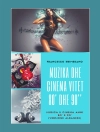A sensitive and detailed investigation of the complex relationship between text and music in medieval chant.
How do text and melody relate in western liturgical chant? Is the music simply an abstract vehicle for the text, or does it articulate textual structure and meaning? These questions are addressed here through a case study of the second-mode tracts, lengthy and complex solo chants for Lent, which were created in the papal choir of Rome before the mid-eighth century. These partially formulaic chants function as exegesis, with non-syntactical text divisions and emphatic musical phrases promoting certain directions of inner meditation in both performers and listeners. Dr Hornby compares the four second-mode tracts representing the core repertory to related ninth-century Frankish chants, showing that their structural and aesthetic principles are neither Frankish nor a function of their notation in the earliest extant manuscripts, but are instead a well-remembered written reflection of a long oral tradition, stemming from Rome.
Dr EMMA HORNBY teaches in the Department of Music at the University of Bristol.
Jadual kandungan
Introduction
The Origins of the Second-Mode Tract Texts
Psalter Divisions
per cola et commata and Textual Grammar in the Structure of the Second-Mode Tracts
The Musical Grammar of the Second-Mode Tracts
Responses to Textual Meaning in the Second-Mode Tract Melodies
Genre and the Second-Mode Tracts
Eripe me and the Frankish Understanding of the Second-Mode Tracts in the Early-Ninth Century
The Understanding of the Genre in the Earliest Notated Witnesses: The Evidence of the Second-Mode Tracts Composed by ca. 900 AD
Conclusion
Appendix 1: Second-Mode Tract Texts, Translations, Parts of Speech and Melodic Phrases
Appendix 2: Mass Proper Manuscripts Referred to in this Study, and the Repertory of Second-Mode Tracts Found in the Sample of Early Manuscripts
Appendix 3: Facsimiles of
Audi filia and
Diffusa est gratia in
Lei, and of the Second-Mode Tracts in
Fle1 and
Kor
Appendix 4: Analytical Tables of the Formulaic Phrases in
Fle1 and
Orc
Appendix 5: The Textual Tradition of the Core Repertory Second-Mode Tracts and
Eripe me
Appendix 6: Transcriptions of the Chants Discussed in this Study
Bibliography












